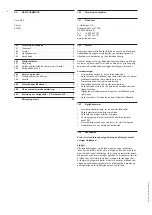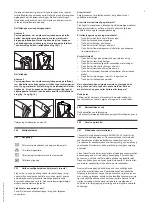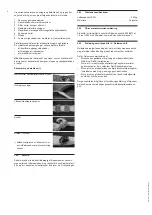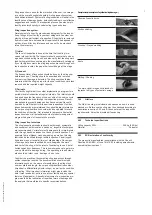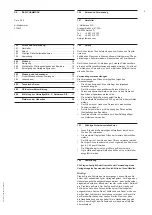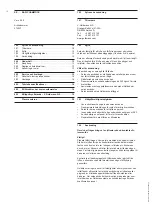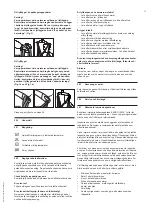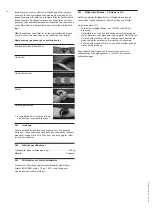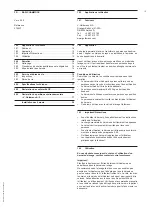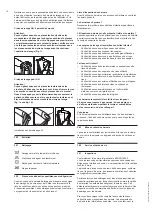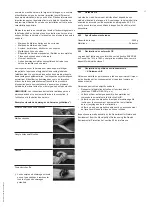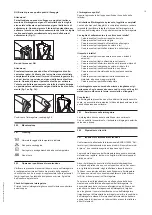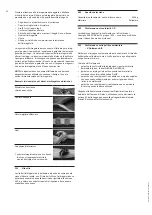
6
©
Guldmann
08/2016
# 9006
94_5
©
Guldmann
08/2016
# 9006
94_5
GH lifting hanger, 4 attachment points
Caution!
Be careful when attaching the lifting sling’s straps on the
hooks . Check that the straps have been correctly placed in
the lifting hanger’s hooks . When pressing the up button on
the hand control to lift the user, check again that all straps
remain correctly placed in the lifting hanger’s hooks (Fig. 1).
Fig . 1
GH Lifting hanger
Caution!
Be careful when attaching the lifting sling on the hooks .
Check that the straps have been pulled completely through
the rubber safety catch (A) and into place in the lifting
hanger’s hooks . When pressing the up button to lift the user,
check again that all the straps remain correctly placed in the
lifting hanger’s hooks (fig. 1a and fig. 1b).
Fig . 1a
Fig . 1b
A
A
Placing the sling, look at page 28.
2 .00 Maintenance
2 .01 Cleaning
Normal washing at the indicated temperature
Do not use bleaching agent
Tumble-drying at low temperature
Do not iron
2 .02 The owner’s daily maintenance duty
Check the lifting sling for wear and damage before use according
to the following checklist which is not intended to represent all
potential inspection steps. Potential damage may vary. Judgment
of inspector/site prevails.
Sling inspection checklist
Before using a Guldmann sling / accessory check the following:
Is the sling clean?
Follow facility specific infection control procedure.
Is the sling’s label present, legible and complete?
Missing, illegible or incomplete sling label(s) could make identifica
-
tion of appropriate size of the sling, function of sling, and or weight
limit capacity of the sling impossible.
Are the lifting straps and stitches intact?
•
Look for broken or worn stitches
•
Look for knots in straps
•
Look for tears or fraying of straps
•
Look for snags or punctures or holes
•
Look for any particles in fabric or straps
Is the fabric intact?
•
Look for abnormal wear patterns, excessive wear, abrasive
evidence
•
Look for cuts or frayed fabric
•
Look for unusual or significant discoloration
•
Look for snags, punctures, tears, holes
•
Look for frayed or insecure seams
•
Look for any acid / caustic / thermal burns
•
Look for changes in material consistency, e.g. increased
stiffness
•
Look for any imbedded particles
Are slings the original size and length without the use of
knots, pins, tape or other methods to change the shape,
shorten or lengthen them?
Conclusion
If the sling suffers from one or more of the above mentioned
conditions then it must be taken out of service regardless of the
weight of the person to be lifted.
2 .03 Disposal of slings
Slings are disposed of by incineration. By proper incineration
polyester will be degraded to carbon dioxide and water.
3 .00 Service and lifetime
3 .01 Safety/service inspections
In accordance with international standard EN/ISO 10535 “Hoist for
the transfer of disabled persons – Requirements and test meth
-
ods” an inspection
must
be performed every 6-month according
to the following instructions, which is not intended to represent all
potential inspection steps. Potential damage may vary. Judgment
of inspector/site prevails.
Safe Operating Practices with Slings
Considerations for damaged or defective slings and taking them
out of service:
Withdraw the sling from service if one or more of the following
conditions are present:
•
chemical or caustic burns
•
melting or charring of any part of the sling
•
snags, punctures, tears or cuts
•
broken or worn stitches
•
missing, illegible or incomplete sling tag
•
knots in any part of the sling
•
abrasion
•
other visible damage that causes doubt as
to the strength of the sling
Содержание BASIC HAMMOCK
Страница 39: ......


